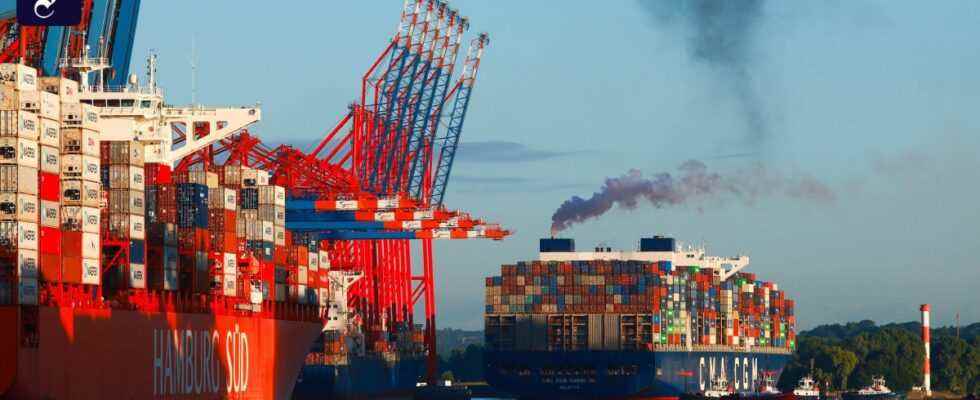Dhe German economy stagnated in the second quarter. As the Federal Statistical Office announced on Friday in a first estimate, the gross domestic product (GDP) remained unchanged compared to the first quarter (0.0 percent) after seasonal and calendar adjustment. According to the latest data, Europe’s largest economy grew by 0.8 percent at the beginning of the year. According to the statisticians, the economy was mainly supported by private and government consumer spending, while the trade balance dampened economic growth.
The list of burdens on the German economy this spring was long: the war in Ukraine and the associated energy crisis, rising prices and ongoing supply bottlenecks. According to the statisticians, all of these factors were clearly reflected in the economic development. In addition, there have recently been more and more signs that the global economy could cool down more and more in the second half of the year. This is also due to concerns about a recession in America.
The economy there shrank by around 0.2 percent in the second quarter compared to the previous quarter, after US GDP had already fallen by 0.4 percent in the first quarter. The American economy has slipped into a so-called technical recession. This is what economists talk about when economic output shrinks for two quarters in a row. High inflation and the ongoing rate hikes by the US Federal Reserve are increasingly slowing down the economy.
The prospects for the development of the German economy in the second half of the year therefore remain uncertain. “While the economy has not contracted, the only positive element in today’s data is probably the upward revision of first-quarter growth,” commented Carsten Brzeski, chief economist at ING Bank. The escalating energy crisis remains the greatest risk to an already bleak outlook. That’s how Commerzbank chief economist Jörg Krämer sees it. “High inflation and fears of a gas crisis have dampened consumer and business sentiment. The risk of recession is increasing,” he warns.
The global resurgence of the corona pandemic and the resulting staff shortages further increased economic concerns, says Alexander Krüger, chief economist at the private bank Hauck Aufhäuser Lampe. “As of today, it would be a success if economic output continued to stagnate in the second half of the year.”
According to estimates by the EU Commission, Europe’s largest economy is expected to grow by just 1.4 percent this year. The International Monetary Fund expects economic growth of just 1.2 percent for the year as a whole.
France and Spain are growing
On the other hand, the economy in the euro zone grew much more strongly than expected in the second quarter. The GDP of the 19 euro countries increased by 0.7 percent compared to the previous quarter, as announced by the European statistical office Eurostat on Friday. Economic output in the entire EU increased by 0.6 percent. In the first quarter of 2022, GDP increased by 0.5 percent in the euro area and by 0.6 percent in the EU. Meanwhile, inflation in the currency area climbed to a high of 8.9 percent. This is the highest rate since the euro was introduced as book money in 1999.
